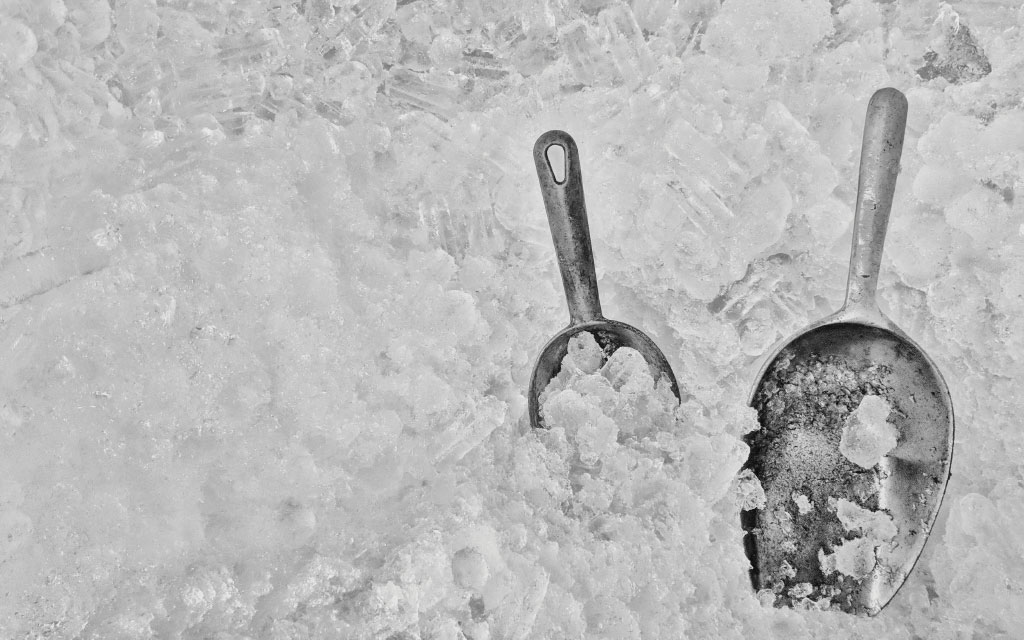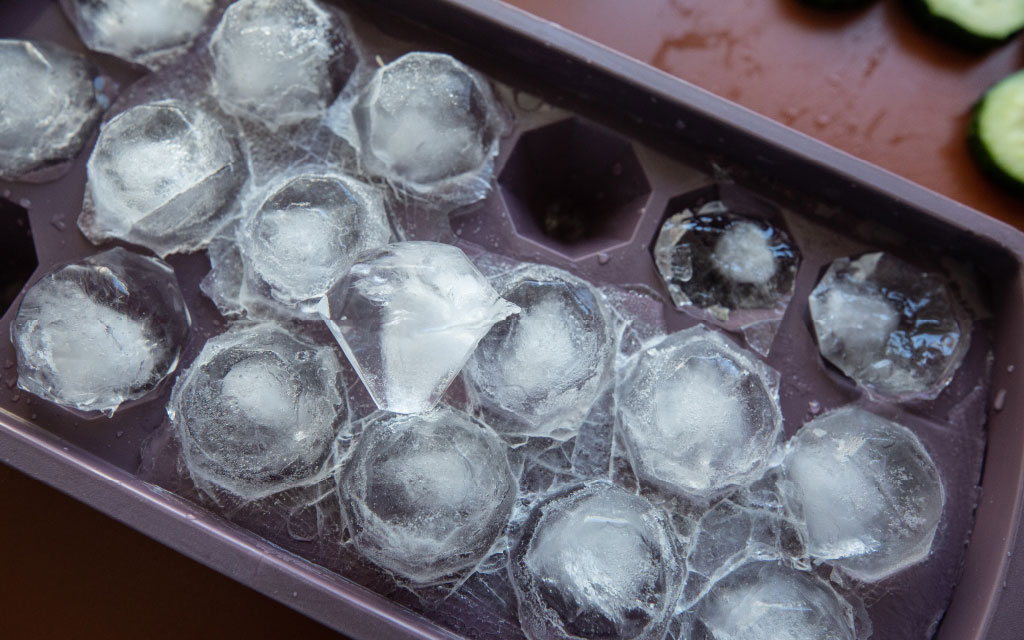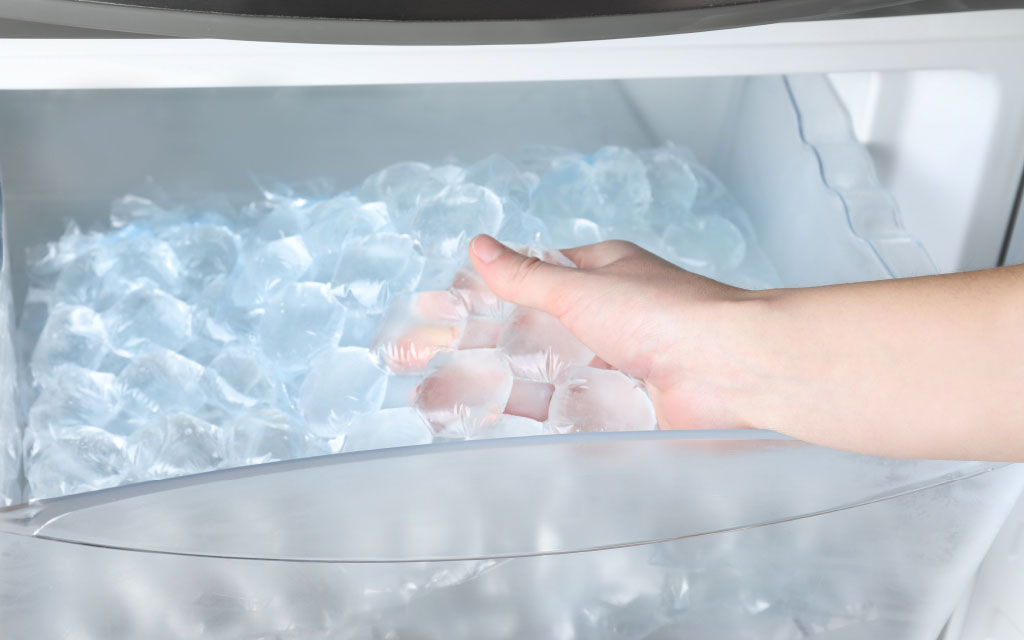
Ice. It’s the critical ingredient no bartender or cocktail maker can go without (unless you’re some sort of ice wizard; then please, by all means – share your magic with us). Even if you simply enjoy making your own drinks at home, you can still appreciate just how much cocktail ice cubes can make or break a great drink.
We utilize cocktail ice in various forms from crushed to spears to good old fashioned cubes; but before even getting to the point of putting ice to drink, it has to come from somewhere, right?
If you’re like me and you’ve worked behind a bar where the freezer is in a completely different location from where drinks are made, or you’ve bartended an event where space for ice is at a minimum, then you’ve likely pondered this thought: “What’s the best way for me to store ice?”
With ice storage being a topic relevant to both at-home and professional cocktail-makers alike, we felt it would be a good idea to discuss the importance of ice cube storage and provide a guide for ensuring your ice remains plentiful and fresh.
Continue reading below to find our thoughts on why ice storage matters, which materials to use for ice storage, how to prevent ice odors, ways to keep ice from sticking, and tips on storing ice in small spaces.

WHY DOES ICE STORAGE MATTER?
- Accessibility
Having a designated place for ice enhances efficiency when making cocktails. - Protection
If set up properly, your storage will keep ice shielded from inevitable spillage or breakage (and any bold, handsy customers). - Prolong the Chill Factor
A quality storage container will help your ice stay icy longer. - Clean Taste
It will help ensure your ice doesn’t take on the taste of other items in your freezer.
Though they can all get the job done, we’ve created the list below with our thoughts on which materials you should consider based on our ranking of best to worst.

BEST (AND WORST) MATERIALS FOR STORING ICE — AND WHY?
Silicone: Silicone is a great option due to the fact that it’s easy to clean and holds up really well to wear and tear. Out of the options listed, this is my favorite because it travels well, is safest from breaking on any type of impact, cleans easily, and is generally cost effective.
- Durable and flexible when needing to transport
- Most prone to locking in smells from surrounding foods, giving your ice an unwanted funk
- Two great options that come with lids, which are great for preventing odors and extending the life of trays: Silicone Ice Cube Tray with Lids or 15 Cube Silicone Ice Mold with Lid
Metal: Metal is a tried and true material that generally holds up well and cleans easily. It is great against odors and maintains the chill factor quite well. After a while, though, you might notice a few dents.
- Easy to clean
- Durable
- Prevents odors well
- Here’s an awesome option for parties and events that keeps ice cold for 24+ hours: Corkcicle Ice Personal Ice Bucket
- Here’s a great option for retro-inspired tools that includes a leer to break the ice block into cubes: Stainless steel ice tray (18)
- If you’re looking to maximize limited bar space at work, check out this option that comes with a 2-bottle holder: 18” x 12” Stainless Steel Ice Bin
Plastic: Plastic coverings are reliable and maintain their shape for quite a while, but they’re prone to bending, which can (at worst) crack them or (at best) cause them to become misshapen and lose their ability to store your ice how you’d like.
- A great, classic option
- Over time, can become worn and cracked
- If you have the budget, here’s a great countertop option that has a plastic bin and technology to help prevent overfilling: Opal Nugget Ice Maker
Glass: Simply put, glass is a fragile material and can crack easily. It’s great in that you can easily see anything being held in a glass container; but aside from that, we do not recommend glass being used consistently or for large portions of ice.
- Easy to see your cubes, but not the best idea for storing ice
- Breaks easily
- May crack if you make your ice in the same container you store it in
Styrofoam: Styrofoam is still commonly used because it’s a great insulator, but it’s somewhat of an outdated material that doesn’t maintain its sturdiness overtime and isn’t an ideal option for those conscious of reducing environmental impact.
- Lightweight
- Effective for carving out required size/shape
- Poor biodegradation and environmental impact
Plastic Bags/Kitchen Wraps: These are best used for short term storage situations as they can become punctured or worn quickly.
- Ineffective at protecting ice from odor-causing items

HOW TO AVOID PICKING UP ODORS IN YOUR ICE
If there’s one thing to take away after reading all this, it’s that it’s quite common for odors to be transferred to ice. That’s because food gases travel quickly throughout a fridge and are readily absorbed by water and ice. Most of the time, these odors will actually dissipate if ice is taken out of the freezer to let sit for a while before serving, but we know no one wants to chance it! So here’s a list of ideas to effectively mitigate the odor problem before it even arises.
- Clean your bin regularly!
- Use baking soda and hot water.
- Check your water source or filtration system.
- Always use fresh ice when serving.
- Keep your ice covered and protected when it’s not being used.
- Get new ice trays if necessary.
- For plastic: every 6 months or when cracked
- For silicone: simply clean after each use
HOW TO PREVENT ICE FROM STICKING TOGETHER DURING STORAGE
Another issue that occurs less often but is still worth consideration (especially if ice presentation is a key component of your cocktail making) is ice sticking together. It can be wasteful to put too much ice in a drink because it’s stuck together or to have uneven pieces of ice being served in drinks, therefore potentially throwing off the final product. We’ve come up with some creative ideas for protecting ice so that it stays separated from everything else just the way you need it.
Cardboard
- Can help prevent cracking due to temperature of environmental changes temperature fractures (cracking due to temperature or environmental changes)
- Find cardboard box of desired size
- Line cardboard exterior with aluminum foil (shiny side exposed) and place ice inside: Aluminum helps insulate ice and protect cardboard!
Plastic
- Use squares or sheets of saran wrap to cover ice cubes/spheres before placing in storage container
Brown paper bag
- Best for temporary use
- Use sheets of a paper bag to wrap individual cubes/spheres and pull when needed
- Be wary of this material getting moist and becoming messy!

FINAL TIPS ON HANDLING ICE IN SMALL STORAGE SPACES
We’d like to offer a few suggestions for those of you particularly looking to do the best you can when storing ice with minimal space available. The unfortunate reality is that some bars just don’t have a ton of real estate for some of the more spacious ice machines or bins, and we understand a little bit of ingenuity and creativity can go a long way to overcome that. So here are a few of our ideas to get you through when things get tight!
Dry ice
- Keeps surrounding ice frozen for hours… if you can get your hands on some!
Use a backup cooler
- If at all possible, keep a backup cooler filled with ice to have easy access when you need to replenish your main bucket.
Partition
- Create some sort of barrier between your ice and the rest of your freezer section to increase organization.
For Home Fridges
- Start using a lid on your trays.
Do you have any creative solutions for storing ice effectively? We always enjoy feedback from our community and the inventive ideas you all come up with. Please share your thoughts with us in the comments or in our Facebook group! Thank you!


